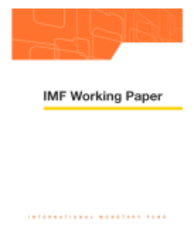
What Explains the Rise in Food Price Volatility?
The macroeconomic effects of large food price swings can be broad and far-reaching, including the balance of payments of importers and exporters, budgets, inflation, and poverty. For market participants and policymakers, managing low frequency volatility-i.e., the component of volatility that persists for longer than one harvest year-may be more challenging as uncertainty regarding its persistence is likely to be higher. This paper measures the low frequency volatility of food commodity spot prices using the spline- GARCH approach. It finds that low frequency volatility is positively correlated across different commodities, suggesting an important role for common factors. It also identifies a number of determinants of low frequency volatility, two of which-the variation in U.S. inflation and the U.S. dollar exchange rate-explain a relatively large part of the rise in volatility since the mid-1990s.
Publication date: May 2010
ISBN: 9781455201129
$18.00
Add to Cart by clicking price of the language and format you'd like to purchase
Available Languages and Formats
| English |
Prices in red indicate formats that are not yet available but are forthcoming.
Topics covered in this book
This title contains information about the following subjects.
Click on a subject if you would like to see other titles with the same subjects.
Industries - Food Industry , Volatility , Agricultural Economics , food price , commodity prices , palm oil , futures markets , open interest , General Financial Markets
Also of interest
Summary
Copyright © 2010 - 2025
Powered by:
AIDC



